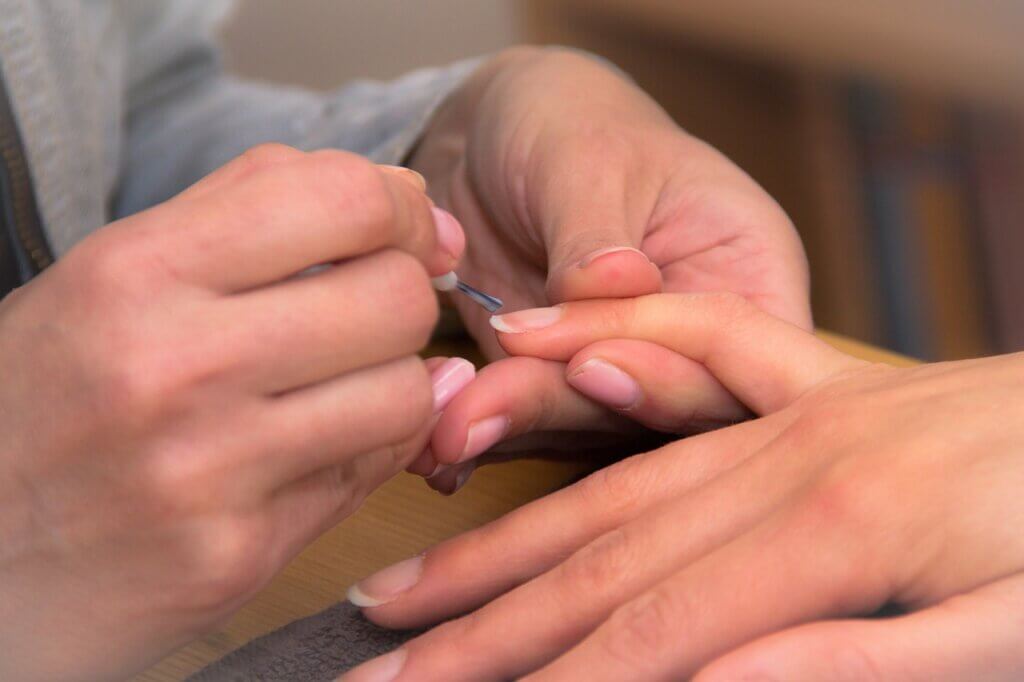Proper nail care is essential for maintaining healthy and beautiful nails. Neglecting nail care can lead to various issues such as nail breakages and ingrown nails, which can be painful and frustrating. When we don’t take care of our nails, they become weak, brittle, and prone to damage. By incorporating regular nail care into our routine, we can strengthen our nails and prevent these common problems.
Understanding Nail Anatomy
Understanding the anatomy of our nails is key to maintaining their health and beauty. Nails are composed of several important parts, each with its own function. The main part of the nail is called the nail plate, which is the hard, protective layer that covers the tips of our fingers and toes. It provides strength and support to the nail.
At the base of the nail plate, we have the nail matrix, a specialised area where new nail cells are produced. The matrix is responsible for the growth and development of the nail. Just above the nail plate, we have the cuticle, a thin layer of skin that seals the space between the nail plate and the surrounding skin. The cuticle acts as a protective barrier, preventing bacteria and other harmful substances from entering the nail bed.
Beneath the nail plate is the nail bed, which contains blood vessels and nerves. The nail bed provides nutrients to the nail matrix, helping in nail growth and maintenance. The lunula, commonly known as the “half-moon,” is the visible white crescent-shaped area at the base of the nail. It is a reflection of the underlying nail matrix and is an important indicator of nail health.
Understanding the different parts of the nail and how they function allows us to better care for our nails. By keeping the nail plate clean, maintaining healthy cuticles, and nourishing the nail bed, we can promote strong and beautiful nails.
Common Nail Issues and How to Address Them
Nails are not just a cosmetic feature; they also provide protection and support to our fingertips. However, they are susceptible to various issues that can affect their appearance and health. In this section, we will discuss some common nail issues and provide tips on how to address them.
Breakage:
Nail breakage can be caused by various factors, including weak nails, excessive moisture exposure, and rough handling. To address this issue, it is essential to maintain proper nail care habits. Keep your nails well-trimmed to prevent them from snagging on objects. Avoid using your nails as tools for opening packages or scraping surfaces. Additionally, apply a strengthening nail treatment or use nail hardeners to fortify the nails. Ensure your diet includes sufficient nutrients like biotin, zinc, and protein, as they contribute to nail strength.
Discolouration:
Nail discolouration can be a result of many factors, including fungal infections, trauma, and certain medical conditions. To address discoloration, start by identifying the cause. If it’s due to a fungal infection, seek appropriate treatment from a healthcare professional. For superficial discoloration, you can try gentle nail buffing to remove stains. Avoid using nail polish with harsh chemicals and opt for breathable nail polishes. Moisturise the nails and cuticles regularly to keep them hydrated and healthy.
Ingrown Nails:
Ingrown nails occur when the nail edge grows into the surrounding skin, leading to pain, inflammation, and infection. To address this issue, soak the affected finger or toe in warm water to soften the skin. Gently lift the ingrown edge with a clean and sterilised tweezers or a dental floss pick. Avoid cutting the nail too short and wear shoes that provide ample space for your toes. If the ingrown nail persists or becomes infected, consult a healthcare professional for proper treatment.
Fungal Infections:
Fungal infections of the nails, known as onychomycosis, can cause discoloration, thickening, and crumbling of the nails. To address fungal infections, maintain good foot hygiene by keeping your feet clean and dry. Wear breathable socks and shoes, and avoid walking barefoot in public places. Over-the-counter antifungal creams, ointments, or nail lacquers may help treat mild infections. However, if the infection persists or spreads, consult a healthcare professional for prescription medications or other treatment options.

Tips for Healthy Nails
Achieving and maintaining healthy nails goes beyond just applying nail polish. It requires a holistic approach that focuses on proper nail hygiene, a balanced diet, and avoiding harsh chemicals. Here are some tips to help you achieve and maintain healthy nails:
Proper nail hygiene:
- Keep your nails clean and dry. Regularly wash your hands with mild soap and water, and gently scrub your nails using a soft brush.
- Avoid using harsh or abrasive nail products that can damage your nails and cuticles. Opt for gentle nail cleansers and non-acetone nail polish removers.
- Trim your nails regularly to prevent them from becoming too long and prone to breakage. Use a sharp nail clipper and file your nails in one direction to avoid rough edges.
Balanced diet and hydration:
- Nails, like any other part of your body, require proper nutrition to stay healthy. Ensure your diet includes essential nutrients such as biotin, vitamins A, C, and E, iron, and protein. Incorporate foods like leafy greens, nuts, eggs, fish, and lean meats into your meals.
- Stay hydrated by drinking an adequate amount of water throughout the day. Hydration helps maintain nail flexibility and prevents them from becoming dry and brittle.
Avoiding harsh chemicals:
- Harsh chemicals found in cleaning products, detergents, and nail polish removers can weaken and damage your nails. Wear gloves when using these products to protect your nails from prolonged exposure.
- When choosing nail polishes, look for brands that are free from harmful chemicals like formaldehyde, toluene, and DBP. These chemicals can cause dryness, discoloration, and brittleness in nails.
Nail care routines:
- Moisturise your nails and cuticles regularly using cuticle oils or creams. These products help nourish and hydrate the nail bed, keeping your nails healthy and preventing them from becoming dry and brittle.
- Limit the use of nail enhancements, such as gel or acrylic nails, as they can weaken your natural nails. If you do use them, ensure proper application and removal to minimise damage.
- Give your nails regular breaks from nail polish and let them breathe to maintain their natural health and strength.
By following these tips for healthy nails, you can improve the overall appearance and strength of your nails. Remember that nail health is a long-term commitment, so be patient and consistent with your nail care routine. If you have persistent nail concerns or notice any unusual changes in your nails, consult a healthcare professional or a dermatologist for proper diagnosis and guidance.
Nail Care Products to Try
When it comes to nail care, there are a variety of products available that can help promote healthy nails. Two essential products to consider are nail strengtheners and cuticle oils.
Nail strengtheners are formulated to strengthen and protect your nails from breakage and splitting. They often contain ingredients like keratin, calcium, and vitamins to nourish and fortify the nails. Look for a nail strengthener that suits your specific needs, whether you have weak, brittle, or damaged nails.
Cuticle oils are designed to moisturise and nourish the cuticles, promoting healthy nail growth. They often contain ingredients like jojoba oil, vitamin E, and almond oil to hydrate and soften the cuticles. Applying cuticle oil regularly can help prevent dryness, hangnails, and cuticle damage.
When choosing nail care products, read reviews and consider your individual needs. Experiment with different brands to find the ones that work best for you. Incorporating nail strengtheners and cuticle oils into your routine can contribute to stronger, healthier nails.
Wrapping it up
Taking care of your nails is crucial for maintaining their health and preventing common issues. By understanding the anatomy of nails and the factors that contribute to their well-being, you can tackle problems with confidence. Common issues like breakage, discoloration, ingrown nails, and fungal infections can be addressed by following proper nail care techniques.
To maintain healthy nails, it is essential to practise good nail hygiene, including regular cleaning and moisturising. Additionally, incorporating a balanced diet and staying hydrated can support nail health from within.
By implementing these tips and trying out these products, you can give your nails the attention they deserve and enjoy strong, beautiful nails. Remember, nail care is not just about aesthetics; it is a reflection of your overall well-being. So, prioritise nail care and take pride in your healthy nails.

